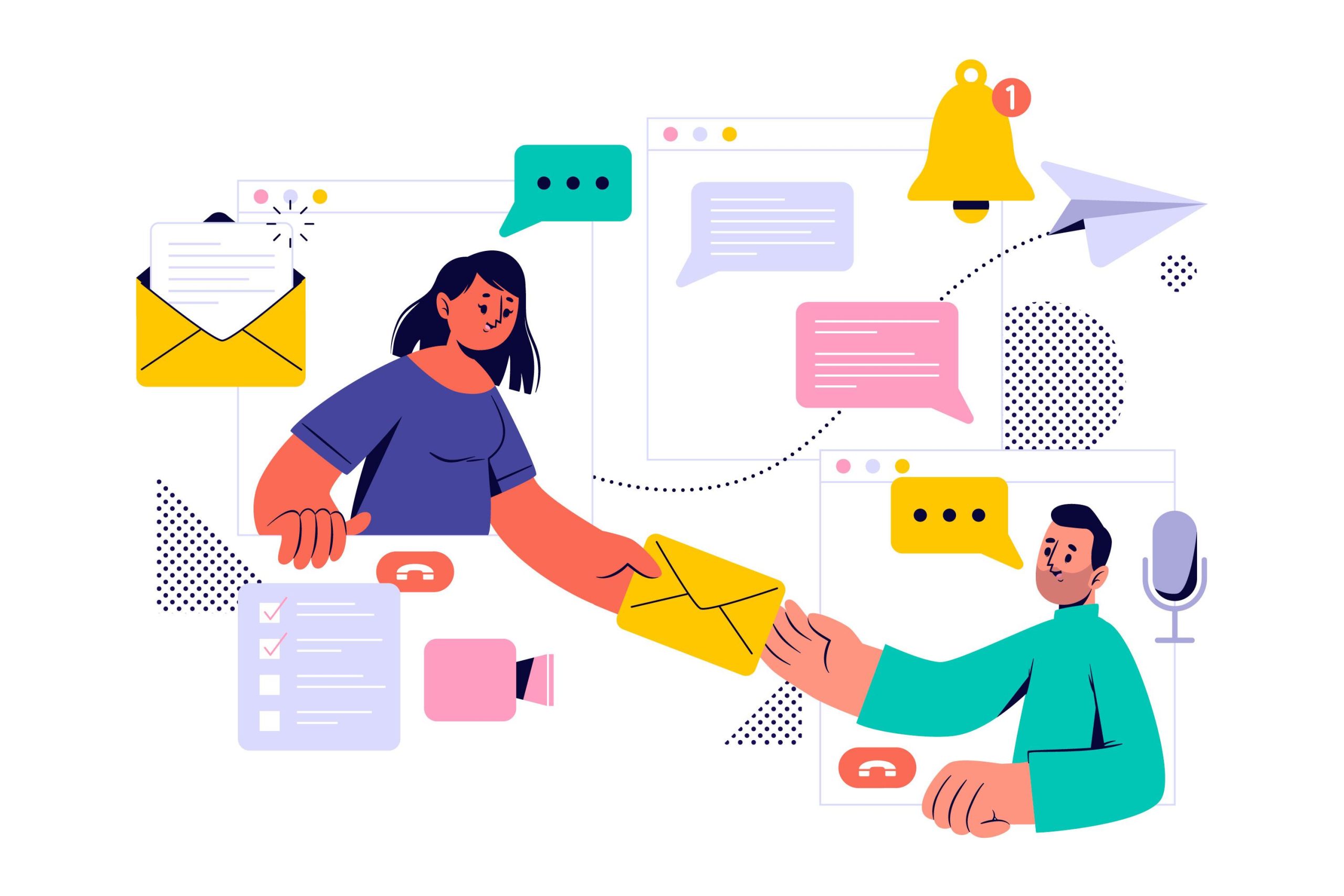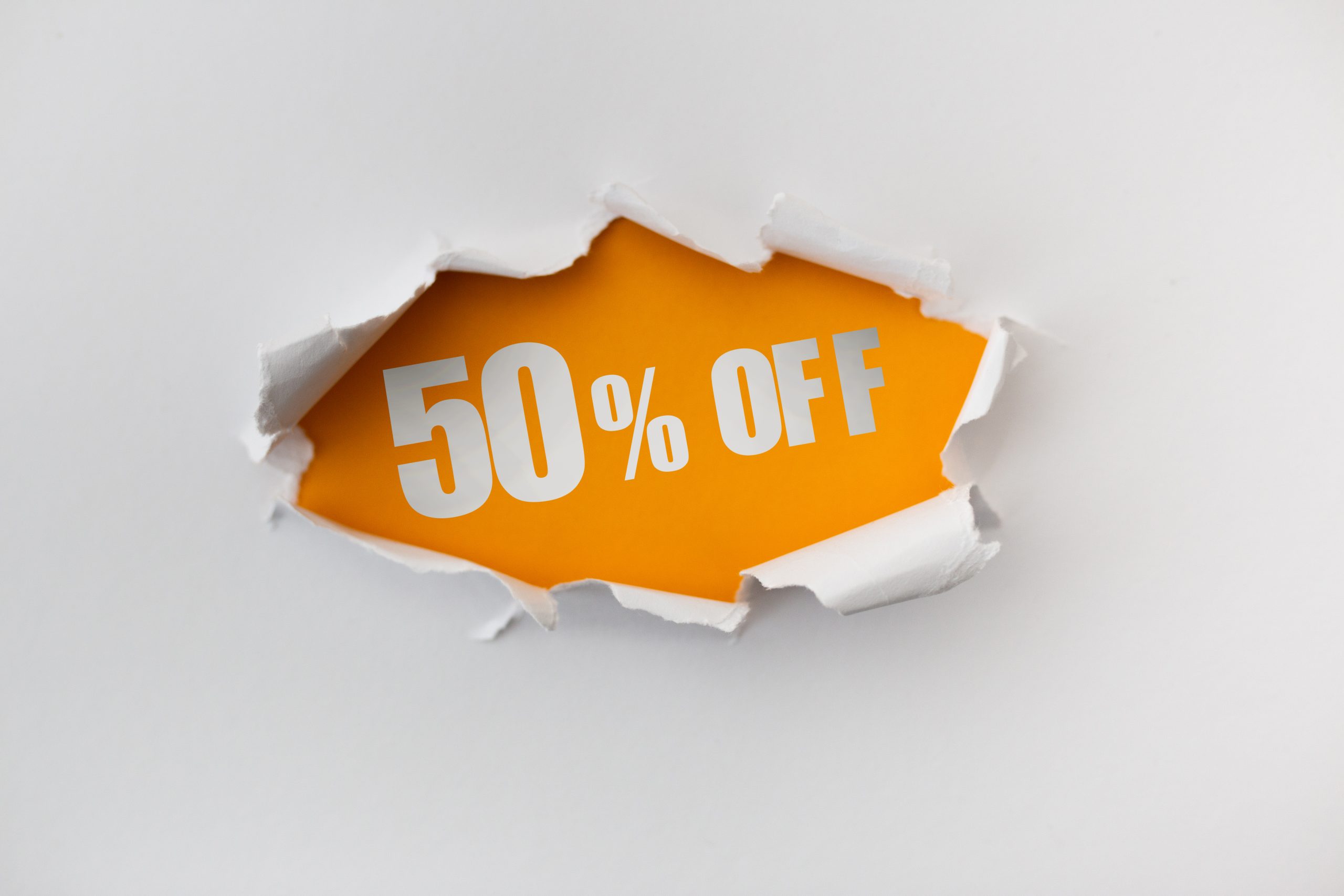Email Structure: Best Practices and Examples
- Hripsime Manukyan
- April 19, 2023
- 6 min read
Crafting a message in the proper email format can be daunting sometimes. However, it allows you to showcase your professionalism and credibility.
Some people believe that emails are of no use. However, it is not true. In fact, based on the latest study, 69% of marketers use email marketing to share content. So, as you can see, email is still one of the most powerful marketing tools you should not overlook.
Whether you’re following up with someone after an event, writing to your boss, contacting a client, or sending a cold email, proper email structure makes all the difference.
In today’s article, we discuss what makes a professional email structure and email templates for various occasions.
So, keep reading!
6 Elements of a Good Email Structure
1. Subject Line
Without a proper subject line, your email structure won’t be important. Your email will simply appear in the trash folder.
A good subject line briefly, concisely, and clearly explains what’s inside your email. It is also short and catchy enough to make people open your email.
Below are some tips for writing effective emails.
- Personalize your subject line
- Write a hook to generate curiosity
- Include numbers for better engagement
- Highlight the pain points to evoke emotions
- Give value
2. Greeting
You need to find a creative way to open up a conversation via email.
Depending on who you are writing to, your email greetings might differ.
If you are writing a formal email, it would be great to use Greetings (Name). However, you can use Hi (Name) if it is an informal email.
Both informal and formal emails should include the person’s name. This is the first thing you should do to make your email more personalized.
However, there might be cases when you don’t know the name of the person you’re reaching out to. You can start your email without a greeting. However, it is recommended to spend some time and try to find the name. Checking out their website is an easy way to find someone’s name.
3. Introduction
You should always introduce yourself before getting to the main part of your email. This is another sign of professionalism you should not overlook.
Briefly tell who you are and what the purpose of your email is.
After introducing yourself, you can jump into the main part of your email.
Mentioning something specific about the recipients in your intro can instantly grab their attention and make them read your email till the end. This could be a specific line from a social media post, their recent achievements, and so on.
4. The Body of Your Message
The next important element of a good email structure is the body of your email. This is where you state the reason why you are writing.
Make sure it is short and on point.
Below are some things to consider when writing the body of your email:
- Explain to the reader why you are contacting them. Use a few sentences to explain the reason for your email.
- If you are going to ask for something, make it clear and use a strong CTA.
- Avoid writing lengthy emails, and don’t beat around the bush. It is better to get to the point immediately.
5. Closing
Your email closing is important too. Consider ending your email on a friendly note.
Below are some useful expressions to use when writing a closing for an email.
- Best Regards
- Best
- Thank you
- All the best
- Regards
- Sincerely
- Waiting for your response
- Looking forward to hearing from you
- It was a pleasure to talk to you
- Hope to work with you
This way, you can leave a positive impression on the reader and demonstrate your professionalism in your email sign-off.
6. Email Signature
Lastly, you need to make sure your email signature is good enough, as it will appear on every email.
A proper email signature lets people know who you are and what your occupation is. It is like a business card but a digital one. So, make sure all the necessary information the recipients need to know about you.
Email signatures typically include the following information.
- Your full name
- Company name and your position
- Phone number
- Your website URL
- Links to your social media pages (if needed)
Apart from providing recipients with information about you, email signatures also are a great way to leave a personal touch on your emails and demonstrate professionalism.
5 Email Templates to Use for Success
1. Guest Post Outreach
Guest post outreach is done to establish relationships with bloggers or website owners and ask them whether they accept guest posts. If yes, you can write articles for other websites and attract more people to your brand/business.
Below are some examples of how to write a guest post outreach email.
Ex. #1
Hello, [Name]
I have been a devoted reader of [Blog Name] for (Specific time period) – and I enjoy reading your blog articles.
I’ve been brainstorming blog post titles and came up with an idea to write an article about [Blog Post Title]. After, I realized that this could be a great contribution to your website and audience.
Here’s the summary of a blog article I’m going to write.
(A short paragraph briefly summarizing the article)
I’ve also published several guest posts on some major blogs, such as [Blog Name 1], [Blog Name 2], and [Blog Name 3]. Below you can find the links to those articles.
Link #1
Link #2
Link #3
Link #4
Let me know what you think. If you are up for such collaboration, contact me to discuss further things.
Looking forward to hearing from you!
Best Regards,
[Your Name]
Ex. #2
Hi [Name],
I am a big e fan of your website [Site name] and have really been enjoying your articles.
I have some fresh blog post ideas that your readers would enjoy reading. So, I was wondering if you are open to a guest blog post.
Below you can find blog post ideas:
[Topic 1]
[Topic 2]
[Topic 3]
Check out some of my articles to understand my writing style better.
[Your Post 1]
[Your Post 2]
Thanks in advance. I can’t wait to hear from you.
Sincerely,
(Your name)
2. Event Follow-Up
Whether you are attending a conference or a networking event, it is important to follow up with people you can collaborate with in the future.
Here is an example of an event follow-up email.
Hi, (Name).
I hope you are doing well. I just wanted to say it was a pleasure to see you at (event name)
We talked about (specific topic), and I’m wondering if we could meet again to discuss this further.
Are you available for a call this week? Let me know what days and times work best for you.
Thanks in advance. Looking forward to hearing from you!
(Name)
3. Special Offer
Promotional emails can be done to both new and loyal customers. This is a great way to attract new customers and expand your business.
Below is an example of a promotional email template you can use in your email marketing campaigns.
Hi, [Name],
Our sale ends this midnight. Don’t miss out on the chance to get [product/service name] at a discounted price and save money. This deal is too good to ignore.
Thank you for choosing us and being a loyal customer.
Best regards,
(Company name) team

4. Product Launch
A product launch email is an email a business sends to its customers announcing either a new product release or a feature and providing them with all the necessary details about the launch. The goal is to let customers know how your new product can benefit them. To make your product launch a success, you need to use the power of email marketing.
We have put together a product launch email example you can use for your email campaigns.
Hi, [First Name],
You are in luck. We have launched a new product, and you are among the first people that know about it.
If you want to learn more about our new product, go through the link below. We can’t wait to hear your thoughts.
Thanks for trusting us and being a loyal customer. We couldn’t do it without you.
Yours,
(Company name) team
5. Influencer Outreach
An influencer outreach email is designed to reach out to someone who has a large following. These people are also known as influencers. Companies use such messaging to encourage influencers to share content about their products/services in exchange for monetary or other compensation.
Hello, (Name).
We hope this email finds you well.
I’m (your name), from (your company). We (tell what you are specialized in).
I’m contacting you because we are launching a social media campaign to promote our (product/service name) (briefly describe your product/service). After doing some research on (mention a social media platform), your account grabbed our attention.
We believe our (product/service name) fits your target audience since your company focuses on (niche name).
We’d be happy to provide you with monetary compensation in exchange for promoting our (product/service name) on your social media platforms.
I’m wondering what thoughts you have about this offer. Waiting for your response.
Thanks in advance. Hope to hear from you soon!
Best,
(Company name)
(Signature)
Conclusion
You may not have enough experience writing emails with a proper structure. However, it is never late to learn the basics and succeed in your email marketing campaigns.
All you need to do is to keep the six elements of a good email structure in mind and use them every time you write a professional email.
Besides, look at some of the email templates we have put together. They will help you gain a better understanding of how to write emails for different occasions.
Good luck!

